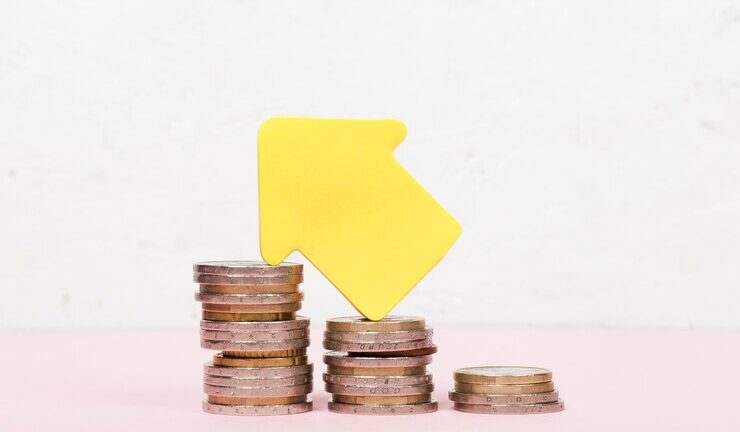Fixed Deposits (FDs) are an important aspect of many individuals’ investment strategies. With guaranteed returns and minimal risk, they offer a reliable way to grow one’s wealth. However, FDs are not one-size-fits-all. There are various types tailored to meet different financial needs and goals. These include:
1. Regular Fixed Deposits
Regular fixed deposits are one of the most common types of FD. They are issued by both banks and NBFCs. They allow individuals to deposit a lump sum for a specified period. This can range from a few days to several years. The interest rate is fixed at the time of investment and does not change over the tenor.
-
Features:
-
Fixed Interest Rate: Ensures predictable returns
-
Flexible Tenor: Typically ranges from 7 days to 10 years
-
2. Senior Citizen Fixed Deposits
Senior citizen fixed deposits are designed for individuals aged 60 and above. These FDs come at higher interest rates than standard FDs. They provide better returns to support retirees’ financial needs.
-
Features:
-
Flexible Payout Options: Interest can be received monthly, quarterly, half-yearly, or annually
-
Tax Benefits: Eligible for deductions under Section 80TTB of the Income Tax Act, 1961
-
3. Cumulative Fixed Deposits
In cumulative fixed deposits, the interest is compounded. It is then paid at the end of the maturity period along with the principal amount. This type of FD could be beneficial for those who are saving for a long-term goal or those who don’t need frequent access to the invested funds.
-
Features:
-
Compound Interest: Interest is compounded quarterly or annually
-
Automatic Renewal: Many banks offer the option to automatically renew the FD upon maturity
-
4. Non-cumulative Fixed Deposits
Non-cumulative fixed deposits pay interest at regular intervals. This could be on a monthly, quarterly, half-yearly, or annual basis. This type of FD is suitable for those who need a steady income stream from their investment.
-
Features:
-
Penalty for Early Withdrawal: Premature withdrawal is allowed but may incur a marginal penalty
-
Tax Implications: Interest earned is subject to tax, and Tax Deducted at Source (TDS) is applicable if the interest exceeds a certain threshold
-
5. Tax-saving Fixed Deposits
Tax-saving fixed deposits offer dual benefits of earning interest and claiming tax deductions. Investments in these FDs are eligible for deductions of up to a limit of ₹1.5 Lakhs per financial year.
-
Features:
-
Lock-in Period: A mandatory lock-in period of 5 years
-
Tax Deduction: Principal investment qualifies for tax deduction under Section 80C
-
6. Flexi Fixed Deposits
Flexi fixed deposits combine the features of a savings account and an FD. The surplus funds in the savings account are automatically transferred to the FD. This may help provide higher interest earnings.
-
Features:
-
Auto-sweep Facility: Surplus savings are moved to an FD
-
Liquidity: Allows easy access to funds while earning higher interest
-
7. Long-term Fixed Deposits
Long-term FDs are designed for those looking to park their funds for extended periods. This can typically range from 1 year to 10 years. These FDs offer higher interest rates compared to short-term deposits. This makes them an attractive option for long-term financial planning.
-
Features:
-
Safety and Security: Principal amount is protected, making it a low-risk investment
-
Stable Returns: Ideal for long-term financial goals like retirement or education
-
Choosing the Right FD
When selecting the right FD, it’s crucial to consider your financial goals, liquidity needs, and tax implications. Here are a few tips that could help in your decision-making process:
-
Assess Your Financial Goals
Determine whether you need regular income, tax savings, or long-term growth. This will guide you to the appropriate type of FD.
-
Compare Interest Rates
Check the interest rates offered by various banks and NBFCs. Even a small difference in rates can impact your returns over the tenor.
-
Consider Liquidity Needs
If you might need access to funds sooner, consider FDs with flexible withdrawal options. Alternatively, you can opt for those offering loans against the deposit.
-
Evaluate Tax Benefits
If tax savings are a priority, opt for tax-saving FDs. This can be beneficial despite the longer lock-in period.
Additional Considerations
Here are some additional points to consider before choosing an FD:
Safety and Security
FDs are one of the safest investment options available. They are not subject to market conditions. This could make them an ideal choice for those who prefer low-risk investments. Furthermore, deposits in banks are insured up to ₹5 Lakhs by the Deposit Insurance and Credit Guarantee Corporation. This can help add an extra layer of security.
Ease of Managing FDs
Managing FDs is straightforward, and many issuers offer online platforms for easy management. Individuals can open, renew, or close FDs, and monitor their investments online. This can be done without the need to visit the branch.
Diversification of Investment Portfolio
FDs can serve as a key component of a diversified investment portfolio. Besides these, depositors can consider allocating some of their savings to other investments. These include government bonds or savings schemes to balance risk and return. Diversification helps in achieving a well-rounded financial strategy.
Fixed deposits come in various types to meet different investment needs. Each type caters to specific financial goals. Long-term fixed deposits, in particular, provide higher interest rates and stable returns. This can make them an excellent choice for long-term planning. Understanding the various types of FDs can help you make an informed decision. Doing so can ensure your investment aligns with your objectives and risk tolerance.

